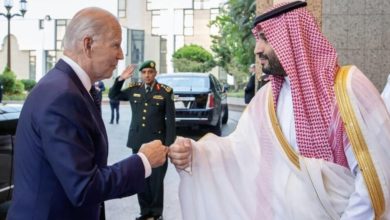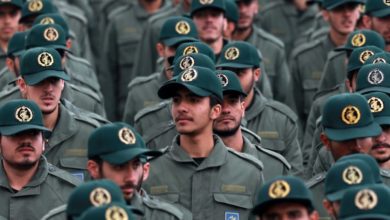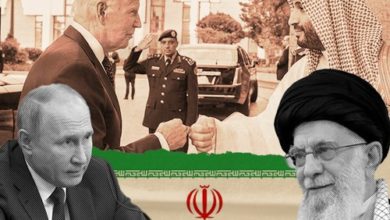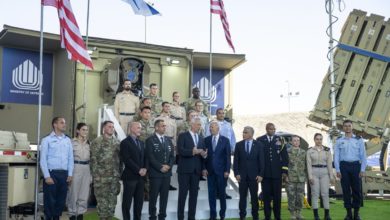The announcement of a rise in fuel prices on Nov. 15 triggered days of protests and widespread vandalism across Iran. It is difficult to determine exactly when the unrest subsided, but it is clear that the bulk of the actions took place within the first 48 hours. By Nov. 18, various security officials were reporting the return of calm and order to their respective jurisdictions. By Nov. 21, President Hassan Rouhani had declared the complete return of calm and security.
Price gouging?
Western media outlets report that gas prices in Iran increased by as much as 300 percent. While this is technically correct, it is devoid of context and misleading. Even after the price hike, gasoline prices in Iran are among the lowest in the world. Prior to the increase, the price for a liter of gas was 10,000 rials, or less than nine U.S. cents per liter. In other words, a gallon of gas in Iran prior to the price change cost about 35 cents, about one-eighth what it costs in the U.S.
There were several problems with gas being so cheap. One was that the price at the pump was less than the cost of refining the oil and the distribution of gas, even assuming no cost for oil. Even though Iran has large deposits, extracting oil is not free. Therefore, the government has, now for decades, been subsidizing gasoline.
Most car owners are not wealthy, of course. Still, super cheap fuel represents a regressive form of subsidies. Those who do not own automobiles receive nothing while those with large luxury cars or gas guzzlers, or those who drive the farthest, receive the most. Super cheap gasoline also encourages excessive driving and casual, unnecessary trips, contributing to heavy traffic and air pollution. Iran’s daily gas consumption is around 110 million liters, among the highest in the world, higher than Germany, France, the UK …
Another problematic aspect of super cheap gas prices is smuggling. The government estimates that as much of one-fifth of the gasoline is smuggled daily. The price of gasoline in all neighboring countries — Pakistan, Afghanistan, Turkmenistan, Azerbaijan, Armenia, Turkey, and Iraq — is significantly higher. With a total of 3,662 miles of borders with its neighbors, leave alone the gasoline smuggled by sea, it is virtually impossible for Iran to effectively stop the smuggling. Again, this is not just the loss of gasoline but the subsidies spent on gasoline, which directly benefit the smugglers.
The government decided to increase the price of gas to 15,000 rials per liter (52 cents per gallon) for up to 60 liters (16 gallons) per month for private vehicles. That is an increase of 50 percent. Fuel purchased beyond the 60-liter monthly limit will now be sold at 30,000 rials per liter ($1.05 per gallon). Even after this 300 percent increase, which only applies to the amount of gas beyond the subsidized amount, the price of gas in Iran remains among the lowest in the world. It is only 38 percent, or a little over one-third, of U.S. gas prices. Even going forward, it is highly likely that excessive consumption and smuggling of gas will still continue on a large scale, although possibly at a somewhat reduced rate. Additionally, high inflation, the direct result of U.S. sanctions, is likely to make gasoline still cheaper as a result of the expected decline in the value of the rial, Iran’s currency.
Without providing this context, Western media outlets predominantly portray the image of a greedy government engaging in price gouging, mercilessly making its people suffer to line its own pockets. Whatever the extent of corruption and embezzlement among government officials, and there are many documented cases of that, subsidized, super-low gas prices have only enriched smugglers.
Capitalist politicians and ideologues condemning Iran for reducing the subsidies on gas are usually staunchly opposed to government subsidies on any commodities. To them, subsidies are a violation of the laws of the “free” market. But when it comes to Iran, these devout free-marketers all of a sudden go “socialist,” outraged at the reduction of gas subsidies.
Progressives, on the other hand, generally support subsidies and other means of easing the suffering of poor and working people under capitalism. But it is not flat subsidies, provided equally to all layers of society, that they strive for, and certainly not subsidies that disproportionately benefit the wealthy.
Subsidies should benefit the lowest income sectors of society. The Iranian government has announced that the amount saved on the gas subsidies is “intended to raise about $2.55 billion a year for extra subsidies to 18 million families struggling on low incomes.” In response to the possible dismissal of this announcement as mere propaganda, it should be pointed out that the government already pays people cash subsidies, on a monthly basis. It deposits funds directly to the bank accounts of up to 70 percent of the population.
Were protests large?
Within hours, Western media labeled the unrest as “mass protests.” Messages of support for the protesters started pouring in. U.S. Secretary of State Mike Pompeo said to the people of Iran: “The United States is with you.” Even King Salman of Saudi Arabia, an obvious expert on democracy and human rights, eventually got in on the act, inviting Iran to stop the “chaos and destruction.”
Amnesty International announced that at least 106 people had been killed and that the actual number was probably much higher. The available images of the street actions do not suggest anywhere near this level of casualties, but Amnesty claimed that its estimate was based on eyewitness reports! The Iranian government has dismissed Amnesty’s report as “baseless allegations and fabricated figures.”
Citing the need to prevent the coordination of the activities of foreign agents, the Iranian government cut off Iran’s Internet to external sites, except for government institutions and universities. Access to sites within the country, and bank and other business transactions requiring domestic Internet access, were maintained. As of this writing, Nov. 23, international Internet access has been restored, but not to mobile devices.
One reason for Iran cutting off international Internet access was likely to minimize the number of images that would be posted all over the Internet and social media in the West. The Islamic Republic does not want the dissemination of images portraying Iran as a country in chaos. Conversely, the United States, Israel and Saudi Arabia want nothing more than promoting precisely the image of a country on the verge of collapse. On Nov. 22, Pompeo called on Iranian people to “send us their videos, photos, and information documenting the regime’s crackdown on protesters. The U.S. will expose and sanction the abuses.” On the same day, the U.S. imposed sanctions on Iran’s communications minister, Mohammad Javad Azari-Jahromi, in punishment for blocking Internet access.
Despite the cutoff of foreign access to the Internet, plenty of images have made it outside the country. The Internet cutoff came some time after the beginning of the protests, so a large number of video clips and photos already got out. Besides, it is virtually impossible to block all means of communication. It is not difficult to smuggle images on a simple thumb drive or on a laptop hard drive over thousands of miles of border, nor is it impossible to send encrypted images through the government and university offices where Internet access to the outside remained.
In the days to come, surely many more videos and pictures will emerge — Pompeo will undoubtedly get his wish. Still, we are unlikely to see previously unexposed images of mass protests and huge outpourings of people. A clear picture is emerging of the character of the protests from what can already be seen. Actual protests appear to have been of modest sizes, while there was an impressive campaign of destruction and sabotage. According to the Iranian government, what started as peaceful protests by ordinary people was quickly taken over by paid agents bent on maximizing damage and destruction. It is also likely that, in some instances, the fires and the destruction were the first, or only, act, not the end result of genuine protests.
Many of the widely circulated clips show dozens of people who can more accurately be described as spectators than protesters, standing around while buildings and cars are burning down. Others show streets and freeways blocked, with people getting out of their cars and looking around. The few clips of people chanting and protesting show dozens, or at most hundreds, of demonstrators.
Of course, the term “mass protest” is loosely defined. When it comes to U.S. protests, every activist knows that neither the media, nor the local or national governments, characterize even protests of thousands as “mass protests.” It is instructive that the participation of dozens or hundreds qualifies as “mass protests” when the actions take place in a country on the U.S. hit list.
The level of destruction strongly suggests a deliberate campaign of vandalism and destruction. When people spontaneously demonstrate in the streets, sometimes angry protesters do property damage, as in breaking store windows, turning over trash cans or burning tires.
But destruction of property appears to have been the primary objective, not the byproduct, of most of the street actions. According to Fars News Agency, “The violence saw rioters setting fire to as many as 80 department stores across the country, incurring a damage of 170 billion tomans (more than $40 million). The damage has wrecked between 50 to 100 percent of the facilities’ structures. …” Dozens, possibly hundreds, of gas stations around the country were set on fire. In addition, the rioters set police stations, banks, office buildings, medical clinics, cars, motorcycles, stores and people’s residences on fire.
Iran’s security forces have reported “arresting 100 leaders of the riot,” with some sources reporting much higher numbers. On Nov. 17, Tehran police reported arresting seven men riding in a pickup truck, armed with incendiary material, who had set five banks on fire in rapid succession. In this instance, the individuals arrested were not Iranian, but “from a country East of Iran.” Officials report having arrested elements with ties to the MKO (a pro-U.S. opposition force), monarchists and people with criminal histories, probably paid for these operations.
With the vast amounts of money that the United States and Saudi Arabia are willing to pay to bring about their long-sought goal of regime change in Iran, there is little doubt that at least some of the acts of sabotage were carried out by paid agents. Vandalism and destruction appear to have been the bulk of what happened.
There were, of course, individuals protesting the rise in gasoline prices. And even if these individuals were seemingly a small part of the overall picture in this instance, there is, no doubt, a social base for those who wish to protest the rise in gas prices, inflation in general, and the very existence of the Islamic Republic broadly. Exposing the extreme overstatement and exaggeration of pro-imperialist media about the width and breadth of the protests should not be confused with denying the possibility that protests can, in the future, be significant in size, as they were during the right-wing Green Movement in 2009.
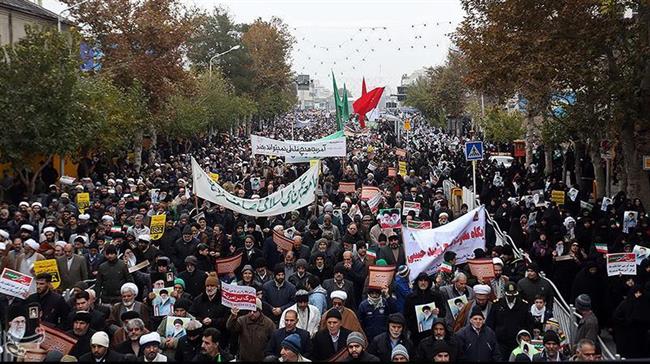
Are people united against the Islamic Republic?
A common propaganda tactic of the capitalist class is to portray every protest, no matter how large or small, as representative of the entire population. The narrative that emerges is “the people versus the dictator,” whether it is Venezuela, Nicaragua, Syria or Iran. In addition to overstating the strength of anti-government protests, a necessary component of this propaganda campaign is to provide little to no coverage of street actions that do not conform to their dominant narrative. Similarly, in the last week alone, there have been two sets of large-scale demonstrations, real mass protests, in support of the Islamic Republic and against the campaign of destruction and sabotage and its U.S. sponsors. But the average person following the news likely knows nothing about these protests.
Participants in these marches, the latest on Nov. 22, were clear in their message that economic hardships are the direct result, and the stated purpose, of the illegal U.S. sanctions on Iran. The vast majority of these demonstrators are from the working class and the poor, the very sectors most suffering under the economic hardships caused by the sanctions.
U.S. ‘support’ for the people
U.S. officials shedding crocodile tears for the people of Iran is particularly insulting. In the words of Assal Rad, a research fellow at the National Iranian American Council, “The Trump administration could end its collective punishment by giving Iranians the economic relief they were promised under the JCPOA, lift sanctions and allow Iran to sell its oil.”
But, of course, it is not support for the Iranian people that the U.S. is interested in. Instead, the Trump administration is attempting to starve the Iranian people to create instability and overthrow the state. As in the case of Cuba, the DPRK and Venezuela, the U.S. imposes debilitating sanctions on countries it wants to overthrow. Then, it cites the damage inflicted on the economies of the targeted countries as evidence that their governments are corrupt and incompetent.
Iran is far from a socialist state. But its capitalist economy with its large and strong state sector provides a significant obstacle to penetration by international corporate capital. Politically, not only does Tehran refuse to follow Washington’s dictates, it is a strong force in the region against imperialist dominance. There is a reason that successive U.S. administrations since the revolution of 1979 have pursued regime change in Iran. To them, independence and national development must be crushed.
For that same reason, revolutionaries and progressives in the U.S. should stand with Iran’s independence against U.S. imperialism. Workers and oppressed people in the U.S. have nothing to gain from imperialist adventures abroad. The same capitalist ruling class that is oppressing people here is oppressing people around the globe. Revolutionaries and progressives should unite in demanding: U.S. Hands off Iran!


